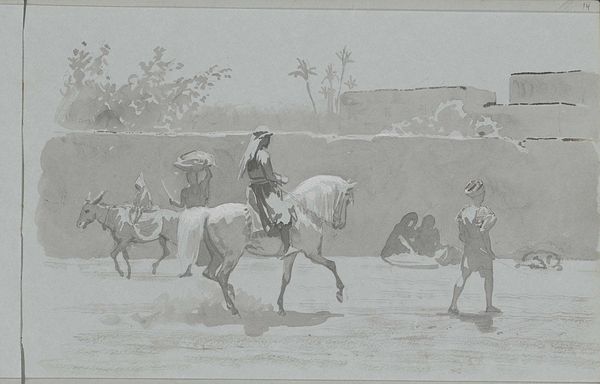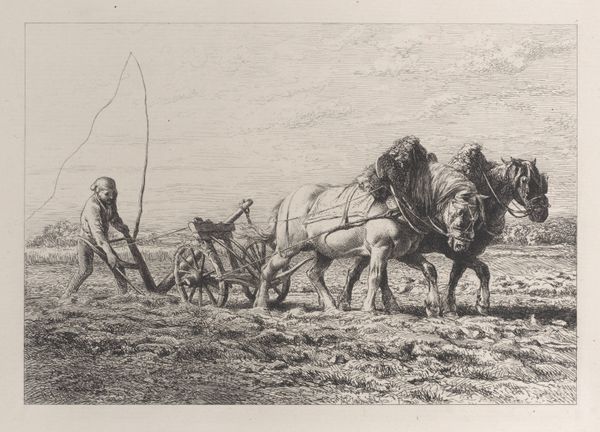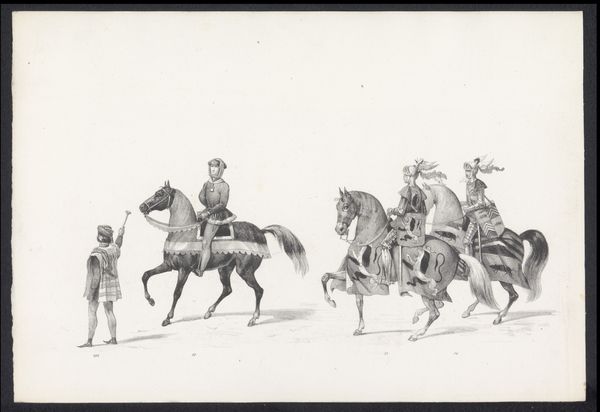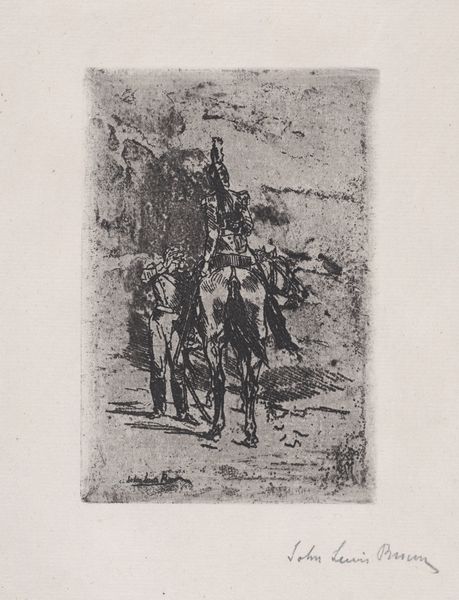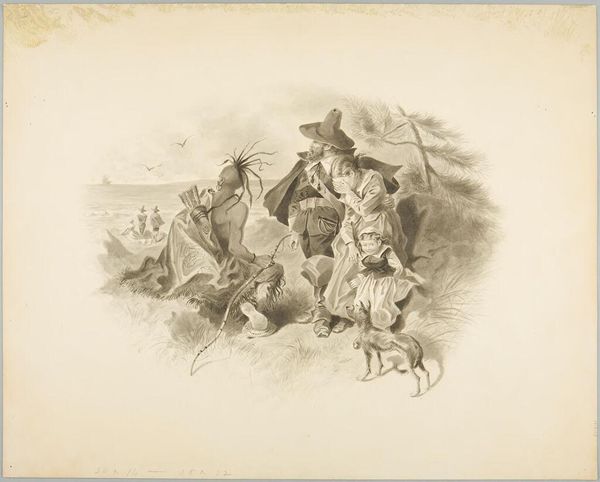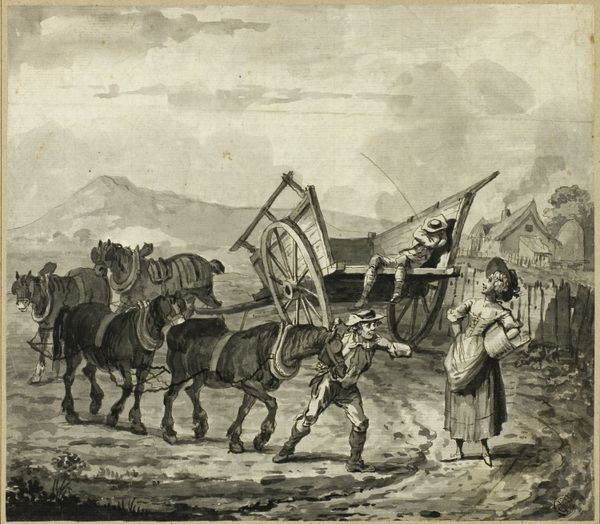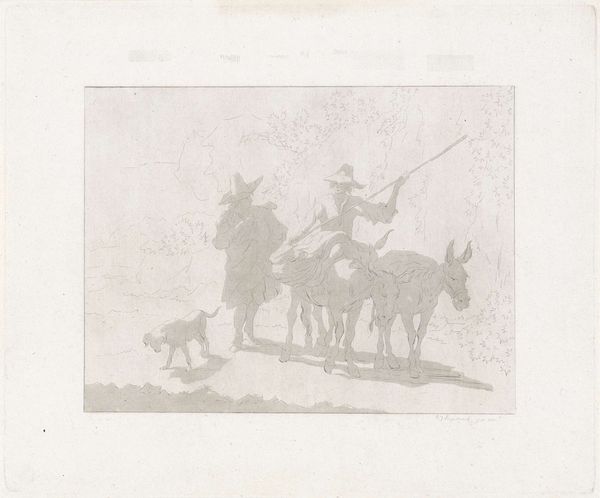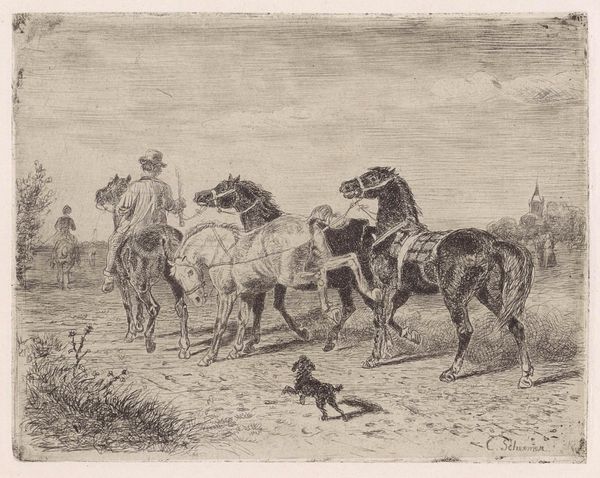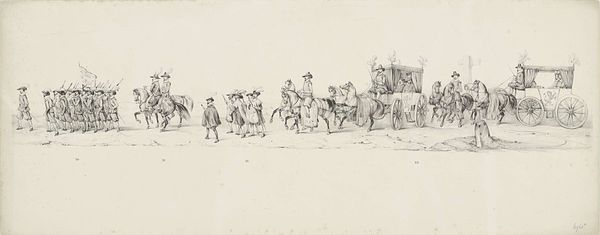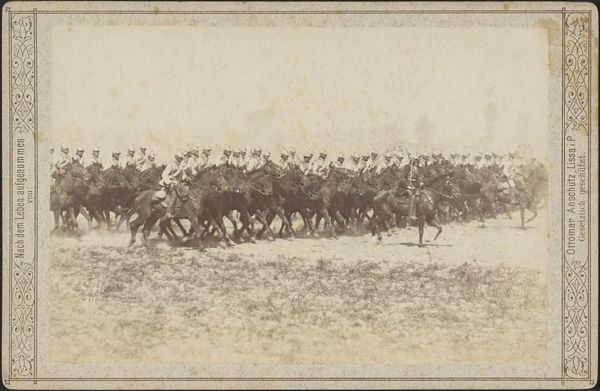
Neapolitan Conveyance - Copy of a Painting at Lacock Abbey c. 1840
0:00
0:00
print, paper, photography, albumen-print
#
16_19th-century
# print
#
landscape
#
paper
#
photography
#
england
#
romanticism
#
genre-painting
#
albumen-print
Dimensions: 13.8 × 21.3 cm (image); 18.7 × 22.9 cm (paper)
Copyright: Public Domain
Curator: Looking at "Neapolitan Conveyance - Copy of a Painting at Lacock Abbey," an albumen print made circa 1840 by William Henry Fox Talbot, I'm immediately struck by the energetic scene. Editor: Yes, there's a certain chaotic urgency to it, isn't there? The way the figures are arranged and how the horses appear to gallop directly at the viewer generates some dramatic movement. Almost overwhelmingly so. Curator: Talbot made this print by photographing a painting—an interesting approach to image-making even now. It really emphasizes the production process and the technology used to achieve the image, rather than simply focusing on a direct representation of reality. Editor: Precisely. The very act of replicating a painting through this relatively new medium raises so many fascinating questions about the relationship between image, truth, and social class. Think about the access to these images – who could afford it? What narratives were prioritized? This staged scene, of figures from varying classes traveling together, could speak to the aspirations and anxieties of a society in flux. Curator: It definitely collapses conventional artistic hierarchies. Here, photography, seen as a scientific tool, intersects with painting, traditionally seen as high art, forcing us to question the value attributed to different art forms, as well as who gets to decide what is "art." Also consider, the physical manipulation. The fading and light altering, giving the feeling the carriage ride has come straight out of history. Editor: And what about the people on the carriage? Note their specific clothing: some are more casually dressed while others display very obvious finery, with a visible disparity reflecting larger social and economic realities, of mobility versus social entrenchment. In those years people traveling together weren't often like that. And yet it would have given a good message, in alignment with an increasing movement to reduce the distances between classes. The print feels posed for progress and advancement in the early Victorian era. Curator: Right, looking closer at this particular albumen print here at the Art Institute, I am drawn to the materiality of the print itself. Albumen printing involves coating paper with egg whites and silver nitrate, a process which feels almost alchemical. The labor-intensive aspect and use of relatively cheap materials for a time creates an egalitarian dimension, but eventually professionalization pushed small producers out. Editor: Agreed, it certainly reflects the dynamic relationship between art, industry, and societal progress in 19th century England. Seeing it now, as a material document that captured social dynamics makes it, for me, a prompt to ask what exactly is propelling these passengers forward. Curator: Definitely leaves one contemplating the journey both intended and unintended. Editor: Absolutely. Thank you, that’s quite enriching.
Comments
No comments
Be the first to comment and join the conversation on the ultimate creative platform.
